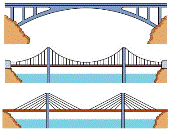Civil and Environmental Engineering, Department of

Department of Civil and Environmental Engineering: Faculty Publications
Document Type
Article
Date of this Version
2020
Citation
Water 2020, 12, 428
Abstract
This study combines empirical predictive and economics models to estimate the cost of remediation for domestic wells exceeding suggested treatment thresholds for nitrates. A multiple logistic regression model predicted the probability of well contamination by nitrate, and a life cycle costing methodology was used to estimate costs of nitrate contamination in groundwater in two areas of Nebraska. In south-central Nebraska, 37% of wells were estimated to be at risk of exceeding a threshold of 7.5 mg/L as N, and 17% were at risk of exceeding 10 mg/L as N, the legal limit for human consumption in the United States. In an area in northeastern Nebraska, 82% of wells were at risk of exceeding the 10 mg/L as N legal threshold. Reverse osmosis Point-of-Use (POU) treatment was the option with the lowest costs for a household (3–4 individuals), with an average of $4–$164 total regional cost per household per year depending on the threshold for treatment. Ion exchange and distillation were the next most cost-effective options. At the community level (~10,000 individuals), a reverse osmosis Point-of-Entry (POE) treatment system was the most expensive option for a community due to high initial costs and ongoing operation and maintenance costs, whereas the biological denitrification system was least expensive due to economies of scale. This study demonstrates integrated modeling methods to assess water treatment costs over time associated with groundwater nitrate contamination, including quantification of at-risk wells, and identifies suitable options for treatment systems for rural households and communities based on their cost.


Comments
© 2020 by the authors. Open access
doi:10.3390/w12020428